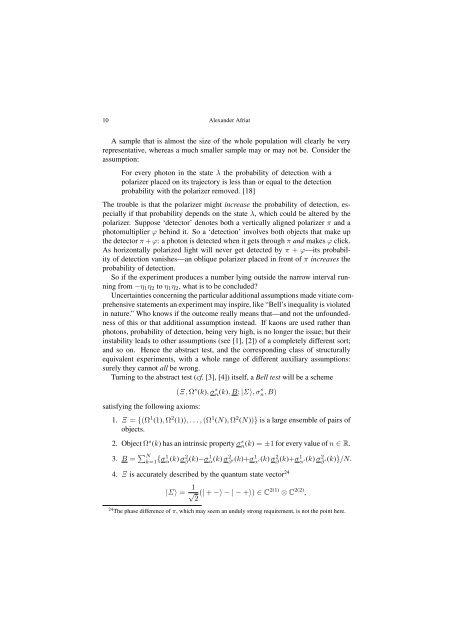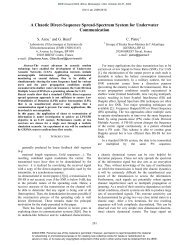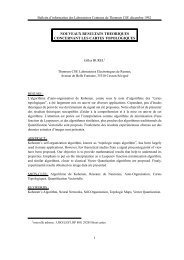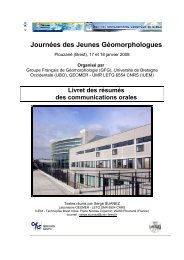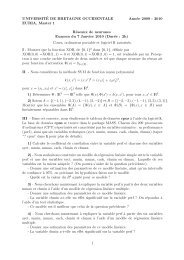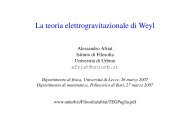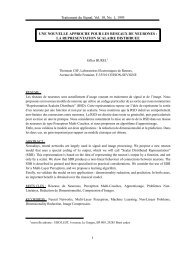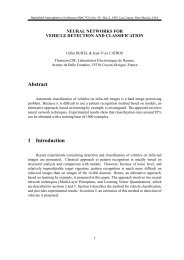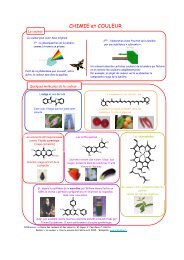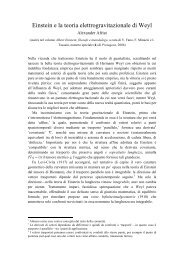Duhem, Quine and the other dogma
Duhem, Quine and the other dogma
Duhem, Quine and the other dogma
- No tags were found...
You also want an ePaper? Increase the reach of your titles
YUMPU automatically turns print PDFs into web optimized ePapers that Google loves.
10 Alex<strong>and</strong>er Afriat<br />
A sample that is almost <strong>the</strong> size of <strong>the</strong> whole population will clearly be very<br />
representative, whereas a much smaller sample may or may not be. Consider <strong>the</strong><br />
assumption:<br />
For every photon in <strong>the</strong> state λ <strong>the</strong> probability of detection with a<br />
polarizer placed on its trajectory is less than or equal to <strong>the</strong> detection<br />
probability with <strong>the</strong> polarizer removed. [18]<br />
The trouble is that <strong>the</strong> polarizer might increase <strong>the</strong> probability of detection, especially<br />
if that probability depends on <strong>the</strong> state λ, which could be altered by <strong>the</strong><br />
polarizer. Suppose ‘detector’ denotes both a vertically aligned polarizer π <strong>and</strong> a<br />
photomultiplier ϕ behind it. So a ‘detection’ involves both objects that make up<br />
<strong>the</strong> detector π + ϕ: a photon is detected when it gets through π <strong>and</strong> makes ϕ click.<br />
As horizontally polarized light will never get detected by π + ϕ—its probability<br />
of detection vanishes—an oblique polarizer placed in front of π increases <strong>the</strong><br />
probability of detection.<br />
So if <strong>the</strong> experiment produces a number lying outside <strong>the</strong> narrow interval running<br />
from −η 1 η 2 to η 1 η 2 , what is to be concluded<br />
Uncertainties concerning <strong>the</strong> particular additional assumptions made vitiate comprehensive<br />
statements an experiment may inspire, like “Bell’s inequality is violated<br />
in nature.” Who knows if <strong>the</strong> outcome really means that—<strong>and</strong> not <strong>the</strong> unfoundedness<br />
of this or that additional assumption instead. If kaons are used ra<strong>the</strong>r than<br />
photons, probability of detection, being very high, is no longer <strong>the</strong> issue; but <strong>the</strong>ir<br />
instability leads to o<strong>the</strong>r assumptions (see [1], [2]) of a completely different sort;<br />
<strong>and</strong> so on. Hence <strong>the</strong> abstract test, <strong>and</strong> <strong>the</strong> corresponding class of structurally<br />
equivalent experiments, with a whole range of different auxiliary assumptions:<br />
surely <strong>the</strong>y cannot all be wrong.<br />
Turning to <strong>the</strong> abstract test (cf. [3], [4]) itself, a Bell test will be a scheme<br />
satisfying <strong>the</strong> following axioms:<br />
(Ξ , Ω s (k), σ s n(k), B; |Σ〉, σ s n, B)<br />
1. Ξ = {(Ω 1 (1), Ω 2 (1)), . . . , (Ω 1 (N), Ω 2 (N))} is a large ensemble of pairs of<br />
objects.<br />
2. Object Ω s (k) has an intrinsic property σ s n(k) = ±1 for every value of n ∈ R.<br />
3. B = ∑ N<br />
k=1 {σ1 α(k) σ 2 β (k)−σ1 α(k) σ 2 β ′(k)+σ1 α ′(k) σ2 β (k)+σ1 α ′(k) σ2 β ′(k)}/N.<br />
4. Ξ is accurately described by <strong>the</strong> quantum state vector 24<br />
|Σ〉 = 1 √<br />
2<br />
(| + −〉 − | − +〉) ∈ C 2(1) ⊗ C 2(2) ,<br />
24 The phase difference of π, which may seem an unduly strong requirement, is not <strong>the</strong> point here.


